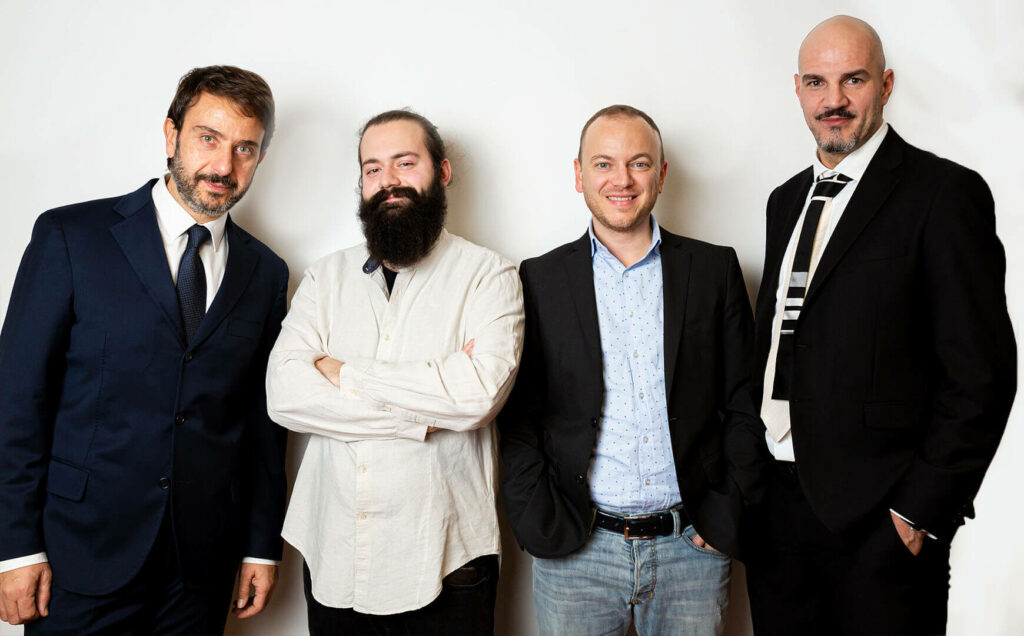TESLASUIT’s partner Vision Lab Apps (VLA) is heading at CES2020 together with TESLASUIT to showcase a unique experience called “Working at Heights by VLA” that will allow a user to experience and train for work that occurs at heights. We asked VLA CEO Gianluca Piazza why it’s so necessary to immerse personnel in the XR experience and how it impacts the industry.

TESLASUIT partner Vision Lab Apps (VLA) creates immersive experiences for wearable devices to connect them with the latest AR and VR technologies with application across various industries, from healthcare to aerospace, gaming to manufacturing to retail.
At CES 2020, visitors will have the possibility to participate in an exciting demo called “Working at Height by VLA” that will allow a user to experience and train for work that occurs at heights. The simulation is built for Oculus Quest and is totally wireless.
Experience Description
With the “Working at Heights” demo you will be able to experience the thrill and the dizziness that operators experience every day when climbing to any place above or below ground level, where a person could be injured if they fell.
By recreating a virtual environment and/or challenging scenarios, operators can be trained in a totally safe, cost-effective, and engaging way, with no risk to personnel or property damage.
It can help develop a better awareness of the hazards and risks in the workplace and allow staff to understand potential outcomes of poor safety habits. In addition, it has high learning retention and recall levels as the learning environment is highly focused, extremely memorable and free from all distractions.

What is the reason for choosing this scenario – working at heights?
We’ve chosen this scenario because it’s the perfect example of a training exercise that is full of risks and hard to reproduce in a small environment. Furthermore, it is an essential requirement for some companies. There is the Construction Projects Regulation that requires anyone who works at height in any place, including at or below ground level, requiring them to undertake training to prove that they are competent and safe in their work.
Just to give an example in terms of the financial and human costs: falling from height is the biggest occupational killer in the British Isles, accounting for 37 (26%) of the 144 occupational deaths between April 2015 and March 2016.
Considering both the financial cost and human cost, the UK Health and Safety Executive estimate the cost of each occupational fatality at £1.6m and each non-fatal injury at £7,400. The financial cost includes such things as production costs, health and rehabilitation costs, administrative and legal costs, and compensation.
The financial implications of a serious health and safety breach are immense. So, we offer a solution that companies need and that can greatly reduce the costs they incur, while maintaining high safety standards pre- and post-training.
Working at Heights is only one of the possible experiences that VLA can develop.
What are 3 main benefits of demo?
- Experience how it feels to climb and be in a high place outdoors.
- Learn more effectively by concentrating on one task at a time in a totally wireless environment.
- Train in total safety, so when you are in the real world you are ready to work.
What are the advantages of using VR training?
With VR training it’s possible to train more users simultaneously in a safe and risk-free environment. Data has shown an increase in employee engagement and knowledge retention. VR Training is also scalable and helps companies to reduce costs and travel time. Last, but not least, detailed training data can be collected to improve future performance.
A recent study from intel has shown that VR can help achieve the following enterprise benefits: Reduce the total cost of ownership of training, increase trainee retention and motivation, and increase return on investment (ROI) for training. The trainee’s response to the new VR-based course was very positive—94 percent asked that more VR-based courses be made available—and ROI calculations indicate that by better matching required courses to employee job roles, the five-year ROI of just this one course could be as high as 300 percent.
Furthermore, each company has budget goals. Training in VR can be an important saving tool for many of them.
Below is just some of the data on the current average spending in the US, for staff training:
According to the 2017 Training Industry Report, companies spent an average of $1,075 per employee trained. This is a nearly 33% increase in overall training expenditure in the U.S. from 2016 to 2017, making for a total of nearly 91 billion dollars.
Can you imagine how much they would save by adopting VR?
Thanks, Gianluca, see you in Vegas!
Eager to test the experience at CES or would like to know more? Turn to info@visionlabapps.com
To learn more about VLA visit visionlabapps.com
